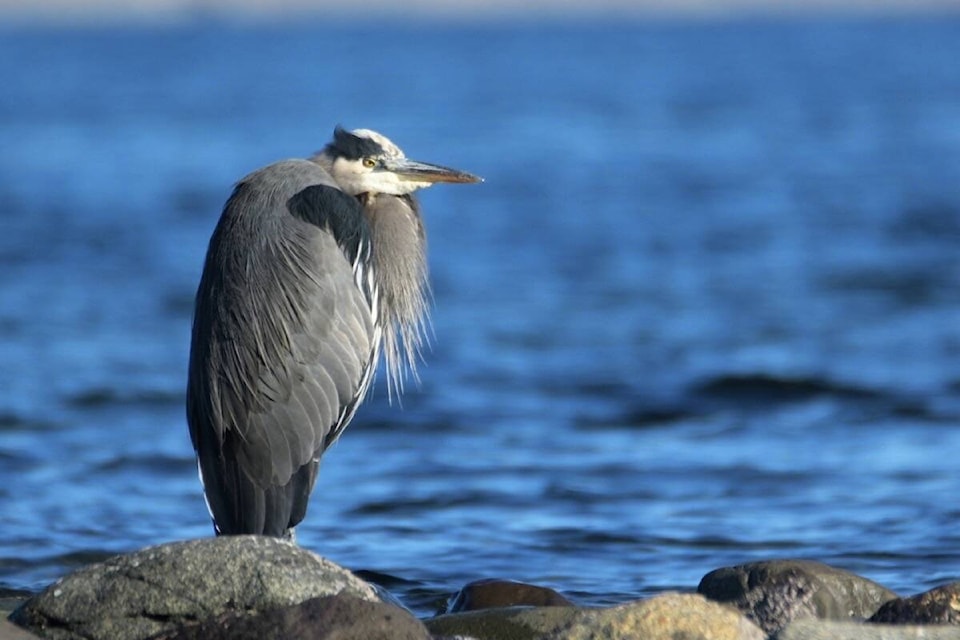The City of Campbell River is asking residents to weigh in on proposed changes to rules about developing near wildlife trees and steep slopes, including pruning for views.
A survey is being conducted by the city on the proposed regulation revisions.
Currently, the city’s Official Community Plan (OCP) has rules protecting trees used by bald eagles for nesting. They establish a 60-metre buffer around each tree and developing in these areas requires a permit be approved.
But now similar rules are being proposed for another locally-nesting bird species, great blue herons. This species is considered sensitive to disturbance and listed as a ‘species of special concern’ in British Columbia.
There are two known great blue heron breeding sites in Campbell River, although more are suspected, said Terri Martin, the city’s environmental specialist.
Both bald eagles and great blue herons might tolerate some development around their nest trees. But in the past, after structures were built in a ‘buffer zone,’ some owners say the tree is a hazard and apply for a provincial permit to request its removal, said Martin.
Thus, establishing these buffers helps maintain the integrity of trees over time.
As it is written now, only eagle trees are protected only after being inspected and listed on the OCP. But modifying that document requires public consultation, which takes time and money, and potentially, worse environmental outcomes.
To remedy this, the city is proposing making development permit criteria apply whether or not a nest is marked. This means the onus will be up to individuals to make sure they do not have a nest on their property, said Martin.
The city is also proposing changes to its steep slope development permit guidelines.
Development around steep slopes has been contentious in Campbell River.
“People are always calling various departments about steep slopes,” said Martin. “They either want to cut or prune trees on the slope for their views, or they are worried that people are cutting trees on the slope raising concerns about slope stability and habitat loss.”
The city undertook a review after a 2018 landslide damaged an occupied residence on Park Road. It examined potential contributing factors, including drainage, the role of mature trees in stabilizing slopes, and yard waste storage. Several recommendations were provided based on guidelines in other communities and professional standards.
As they exist now, the guidelines include a justification section stating they exist to protect not only the safety of people and property, but also ‘environmental values.’
But none of the guidelines relate to environmental protection, said Martin.
As a result, Martin is asking city council whether environment protection rules should be added. This would mean greater tree protection, which may conflict with people wanting an unobstructed view from the top of the slope.
Proposed changes include requiring property to maintain or plan for 25 per cent tree cover on slopes. This would help slope stability, but also provide wildlife habitat and other ecological values, said Martin.
Slopes in Campbell River feature invasive plants, such as ivy and Himalayan blackberry. These prevent new trees from growing and have poor root structure. As such, another change is a requirement to limit invasive plant cover.
A public engagement session on the potential changes will be held on Nov 24, from 6 to 7 p.m.
“We want to know what you think and council wants to know what you think, to help guide their decision.”
RELATED: Campbell River’s eagle tree bylaw could see improvements: biologist
Campbell River’s great blue heron habitat protection process moves forward
sean.feagan@campbellrivermirror.com
Like us on Facebook and follow us on Twitter
